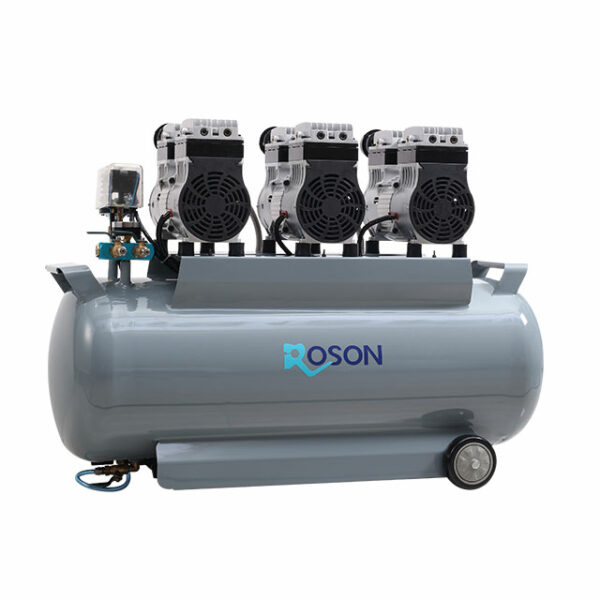Unlocking the Secrets: How Air Compressors Revolutionize Dentistry and Enhance Patient Care!
In the ever-evolving field of dentistry, air compressors have emerged as vital tools that significantly enhance efficiency and patient comfort. These powerful devices are not just simple machines; they play a crucial role in modern dental practices by supplying the necessary air pressure for various tools and procedures. Their importance cannot be overstated, as they help streamline dental tasks, improve the quality of care, and create a more pleasant experience for patients. This article will delve into the different types of air compressors used in dentistry, their primary applications, and the myriad benefits they bring to both dental professionals and their patients.

Types of Air Compressors Used in Dentistry
When it comes to dental practices, understanding the different types of air compressors is essential. There are primarily three categories that dentists often utilize: oil-free compressors, diaphragm compressors, and rotary screw compressors. Oil-free compressors are particularly popular due to their ability to produce clean, dry air, which is crucial for preventing contamination during procedures. These compressors are ideal for powering handpieces and other pneumatic tools without the risk of oil contamination. Diaphragm compressors, known for their compact size and quiet operation, are also commonly used in smaller practices where space is at a premium. On the other hand, rotary screw compressors are best suited for larger clinics with high air demands, as they can deliver a continuous supply of compressed air efficiently. Each type serves a specific purpose and is tailored to meet the unique needs of a dental practice.
Primary Uses of Air Compressors in Dental Procedures
Air compressors find numerous applications in dental procedures, making them indispensable in daily practice. One of their primary uses is in powering dental handpieces, which require a consistent air supply to operate effectively. Whether it’s for drilling, polishing, or other tasks, the efficiency of these handpieces is directly influenced by the quality of the compressed air. Additionally, air compressors are essential for operating air syringes, which are used to deliver air or water during procedures, further enhancing the dentist's ability to perform with precision and speed. Beyond these tools, air compressors also power various pneumatic devices such as scalers and suction units, all of which contribute to a streamlined workflow in the clinic. A friend of mine who works as a dental hygienist often shares how the reliability of air compressors allows her to focus on patient care rather than worrying about equipment failure.
Benefits of Air Compressors in Enhancing Patient Care
The advantages of using air compressors in dentistry extend beyond operational efficiency; they also significantly enhance patient care and comfort. One of the most notable benefits is the improved comfort level for patients. Modern air compressors operate quietly, reducing the noise associated with traditional dental equipment, which can often be a source of anxiety for patients. Additionally, the precision that air compressors provide during procedures leads to better outcomes, as dentists can perform tasks with greater accuracy. This reduction in discomfort not only fosters a more pleasant experience but also encourages patients to return for regular check-ups. Furthermore, the clean air produced by oil-free compressors minimizes the risk of infection, enhancing safety and reliability during treatment. As a result, patients feel more at ease, knowing they are receiving high-quality care in a safe environment.
Maintenance and Best Practices for Air Compressors in Dentistry
To ensure that air compressors function optimally, regular maintenance is essential. Dental professionals must adhere to best practices to prolong the life of their compressors and maintain reliable performance. Routine checks should include monitoring air quality, as contaminants can affect both equipment and patient safety. It is recommended to inspect and change filters regularly to prevent blockages and ensure clean air supply. Additionally, keeping the compressor clean and free of debris will help maintain its efficiency. Some dentists also utilize moisture traps to eliminate excess water from the compressed air, which is crucial for preventing damage to tools and improving overall air quality. A colleague of mine learned the hard way about the importance of maintenance when a neglected compressor led to a breakdown during a busy day. This experience underscores the need for consistent upkeep to avoid disruption in patient care.
Key Takeaways on Air Compressors in Dentistry
In summary, air compressors are essential components of modern dentistry that revolutionize the way dental professionals operate and enhance patient care. From the various types available to their specific applications, air compressors significantly improve the efficiency of dental procedures while providing a better experience for patients. By investing in high-quality air compressor systems and adhering to proper maintenance practices, dental practices can not only ensure smooth operations but also foster an environment of comfort and safety for their patients. Embracing the technology of air compressors is a step forward in providing exceptional dental care in today's fast-paced healthcare landscape.







